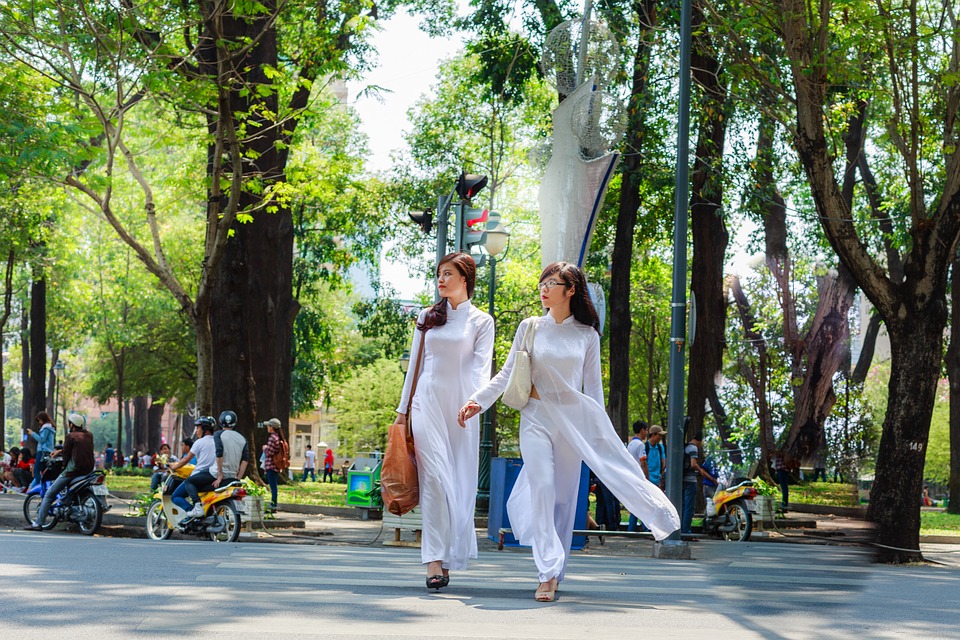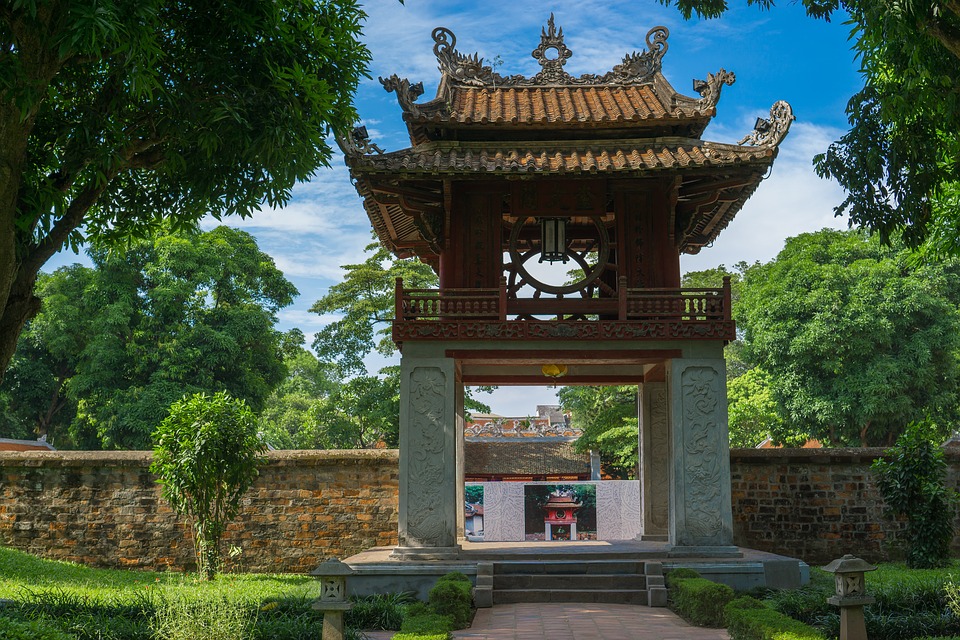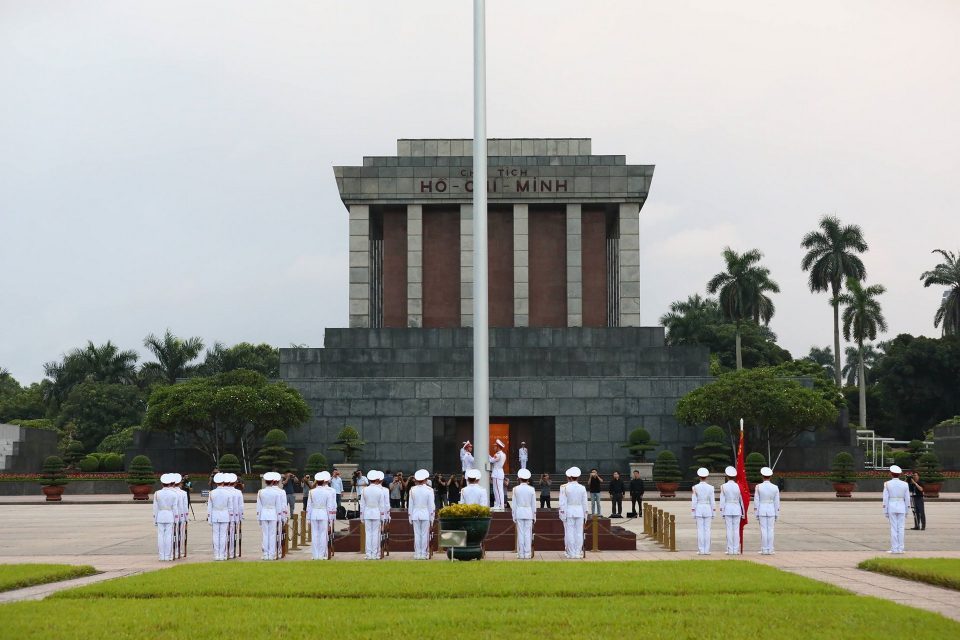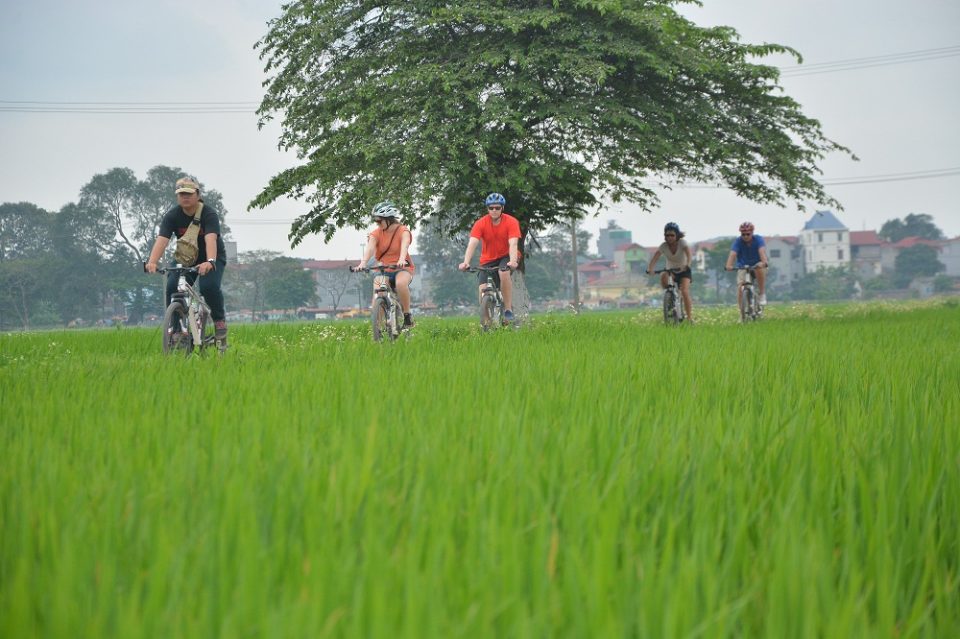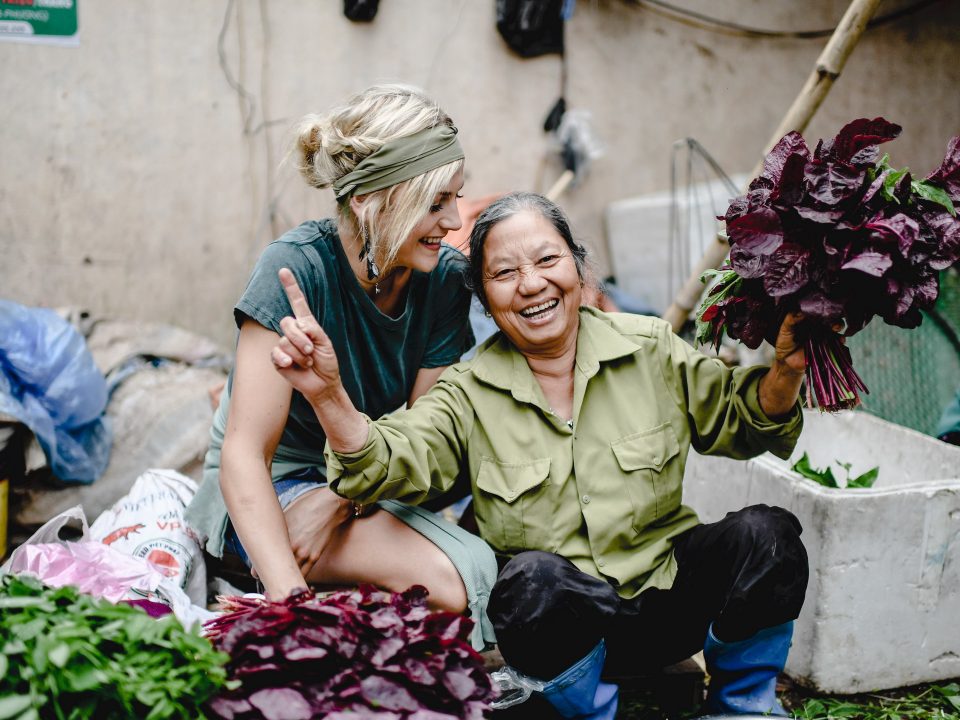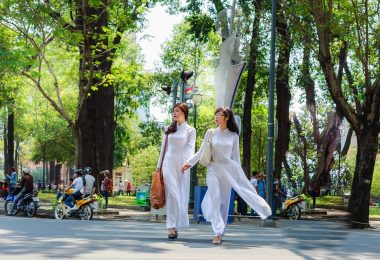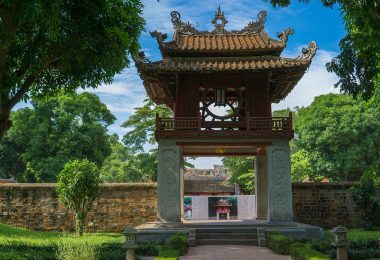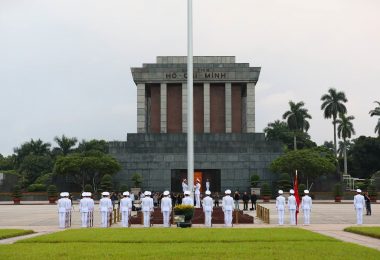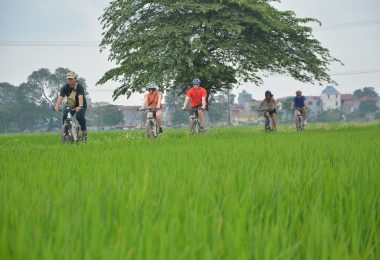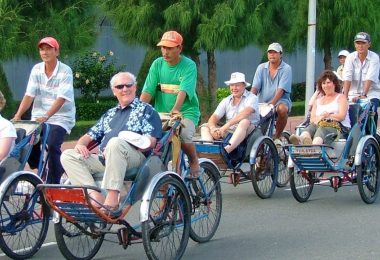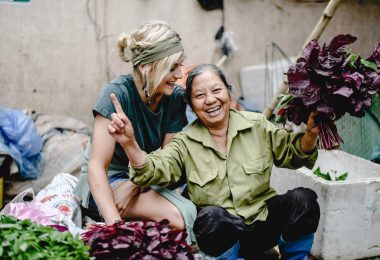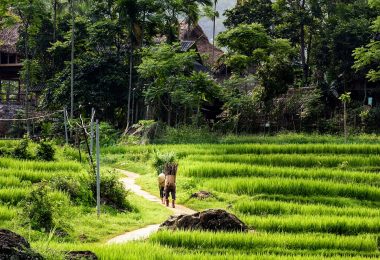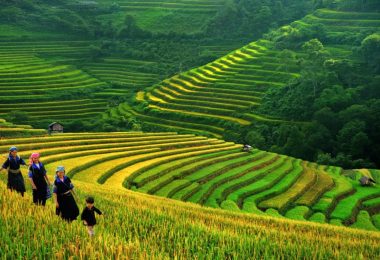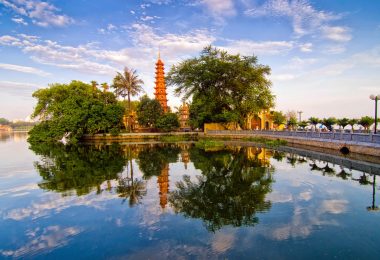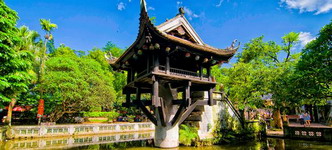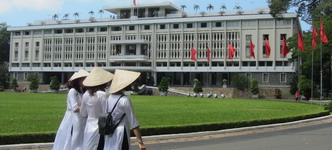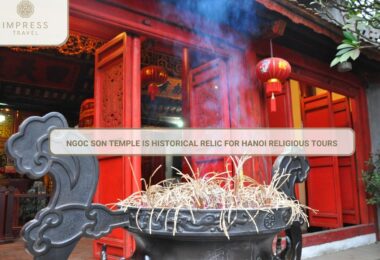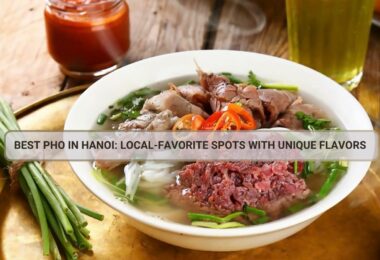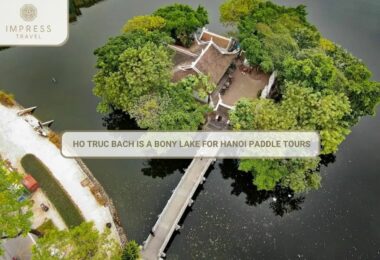“Hanoi’s 36 streets" – anyone who hears it in Vietnam will find it familiar, especially with the people of Hanoi. Some streets, although they do not maintain traditional occupations, still focus on selling one type of goods such as Hang Quat street selling worship items, Hang Buom street selling confectionery,… In this article, Impress travel will introduce the city’s itinerary Hang Dao – the street is considered the most ancient and poetic in Hanoi’s Old Quarter.
Where is Hang Dao Street?
Hang Dao Street, Hanoi is located in the North – South direction, nearly 300m long. The southern end of the street is Dong Kinh Nghia Thuc square next to Hoan Kiem lake, the northern end borders Hang Ngang street. Hang Dao Street existed before the French colonial period, the French called it “Rue de la Soie" (Silk Road), this is also a play on words. In 1945, the name was changed to Hang Dao street.
Hang Dao street extends from Hang Ngang street to the beginning of Hang Gia-Cau Go street. This is a street in Hoan Kiem district, Hanoi city, Vietnam. In terms of contiguity, it is located in the north of Hoan Kiem district, with an administrative boundary to the East bordering Hang Buom and Hang Bac wards. To the South bordering Hang Bac, Hang Trong and Hang Gai wards. To the West bordering Hang Gai and Hang Bo wards.
Hang Dao Street was built on an old dyke that was removed after the Red River changed course, so the ground is quite high. The French called the street Rue de la Soie (“Hang Lua Street"), from the beginning of the 20th century they laid tracks for iron-wheeled trams to run the Bo Ho – Hang Dau route through here, later extending to the Market. Grapefruit and Yen Phu umbrellas.
What is the history of Hang Dao Street?
Going back in history, Hang Dao Street in Hanoi was formed about 400 years ago, along the dyke near Hoan Kiem Lake. According to ancient documents, Dai Loi ward gathered people from Dan Loan village who specialized in silk dyeing from the Tran – Ho dynasties, but during the post-Le period, it became bustling. In the 15th and 16th centuries, people in many places, especially from Dan Loan, Hai Duong to Hanoi, established the Dai Loi ward specializing in silk dyeing, Hang Dao street became the bustling silk center of Thang Long capital.
The street’s name was formed a long time ago, related to the trade of cashew silk dyeing. It is said that before King Ly Thai To moved the capital to Thang Long, there was a Hang Dao ward in the ancient capital of Hoa Lu in the 10th century. In the work Du Dia Chi compiled at the beginning of the early Le dynasty, Nguyen Trai also recorded “The ward Hang Dao is dyed with cashew. At house number 38, there is still the Hoa Loc Thi communal house relic, which is a place to worship the ancestors of the fabric dyeing profession.
In ancient Hoa Lu, there was also Hang Dao ward. Hang Dao street in ancient Thang Long citadel belonged to Dong Lac and Dai Loi wards, Tien Tuc district, Tho Xuong district, Later Le dynasty. Dai Loi ward gathers people from Dan Loan village (Binh Giang, Hai Duong), Dinh Loan village, Dong Cao (Bac Ninh) specializing in silk dyeing from the Tran, Ho, and Le dynasties, which has been very busy. Fabric sellers are mainly retailers.
In fact, in the past, Hang Dao street in Hanoi was originally part of the land of two wards, Dong Lac (on the side bordering Hang Ngang) and Dai Loi (on the side bordering Bo Ho). Most of the shops on Hang Dao Street from the 19th century mainly retailed silk and fabric and were run by women.
By the 17th century, Hang Dao street was very busy because trade was mainly based on trust. The silk market here regularly opens on the 1st and 6th of the lunar month, high quality goods are often exchanged with nearby villages such as Cu Da, Van Phuc, Truc Bach, Trich Sai, Yen Thai,… However, the road is still narrow and the houses protrude into the street, most of them built in a matchbox style that is both low and small.
Most of the shops on Hang Dao Street from the 19th century mainly retailed silk and fabric and were run by women. Gradually, the rich girls here are rumored to be resourceful, skillful at home and beautiful and sharp on the outside, and are often married into families of merchants, mandarins, and intellectuals. One of them is the family of father and son, scholar Luong Van Can – Luong Ngoc Quyen, together with his grandmother and eldest daughter, who clearly demonstrated the bravery and mettle of the nation’s elite.
At the beginning of the 20th century, some Indians opened shops selling woolen fabrics imported from the West, then countless grocery, jewelry, hat making, etc. shops sprang up, but mainly Hang Dao was still a street. silk. Today, the relics of those two old wards are the remaining communal temples: Dong Lac temple, house number 31; Dong Lac family at house number 38; Dai Loi Temple is also called Bach Bo (white cloth) temple at house number 47; Temple of Bach Ma god.
What is Hang Dao Street famous for?
If Tho Nhuom street used to have a profession of dyeing many different colors, then Hang Dao street specializes in dyeing bright, beautiful colors, mainly red and peach, on silk, brocade, fabric… Hang Dao is also the main market of the trade. Selling silk, the buyers are local people, the sellers are La villages of Do and Ha Dong provinces, market days: the first and sixth of every month.
The street still has many relics and temples, but now they have all been moved inside or upstairs, and the street side has become shops. Land here is more expensive than gold, there are stalls that only have a cabinet, a few dozen centimeters, but you can still live decently, because this is one of the typical shopping streets of Hanoi from the past to the present.
Anyone who comes to Hanoi must go to Hang Dao to see that there is nothing missing. The street has all kinds of goods, sparkling like diamonds, bright like gold, shiny like watches, warm like wool, etc. At the beginning of the century, many overseas Indians still came here to trade wool.
What should you explore on Hang Dao Street?
Since 2003, Hoan Kiem District People’s Committee has allowed the establishment of the Hang Dao – Dong Xuan Night Market walking street on the evenings of Fridays, Saturdays and Sundays. The night market sells handicrafts and some Hanoi specialties to serve tourists. The walking street at Hang Dao – Dong Xuan night market has created a new cultural feature of the capital, attracting the attention of the capital’s people and tourists to Hanoi.
In the past, the street specialized in dyeing and selling fabrics dyed red, pink, peach and many other colors. Today, the street no longer sells fabric but sells clothes, utensils, gold and silver, handicrafts, high-end goods and luxury goods.
Visitors to Hang Dao can explore traditional architecture, many ancient houses with traditional Vietnamese architecture still preserved. The buildings have tiled roofs, wooden doors, and architectural details typical of Hanoi’s Old Quarter.
Besides, Hang Dao Street also attracts tourists by its ancient beauty and vibrant atmosphere with outstanding cultural and culinary spaces such as: Many famous communal houses, pagodas, and dining streets attract tourists; As the venue for traditional festivals of Hanoi,…
At Hang Dao in Hanoi, visitors can find many unique and traditional Vietnamese products. Some popular items tourists can buy here include:
- Handicraft products: Visitors can find wood sculptures, embroidery, ceramics, bamboo and rattan items,… These are products made by hand using the following techniques. traditional.
- Traditional costumes: You can buy ao dai, ao dai, shorts, chiffon scarves, etc. These products are often made of silk, linen or traditional brocade fabric.
- Household items and decorations: You can buy teapots, vases, plates, cups, ceramic vases, wall paintings, and many other decorative items made from materials such as wood, porcelain, copper, …
- Souvenirs and children’s toys: Tourists can find dolls, umbrellas, paper fans, wooden toys,… These are unique souvenirs.
Conclusion
Hang Dao Street has existed since ancient Thang Long, with a history of more than 1000 years. It is one of 36 ancient streets of Hanoi, reflecting the historical and economic development of the capital. This is a street where tourists can visit and feel the atmosphere of Hanoi capital with its antiquity and modern pace of life.
Hopefully this article has helped visitors to have a general understanding of Hang Dao. Don’t forget to follow Impress travel’s Facebook and Website to update more information about other streets and book the fastest tour to explore Hanoi!





























